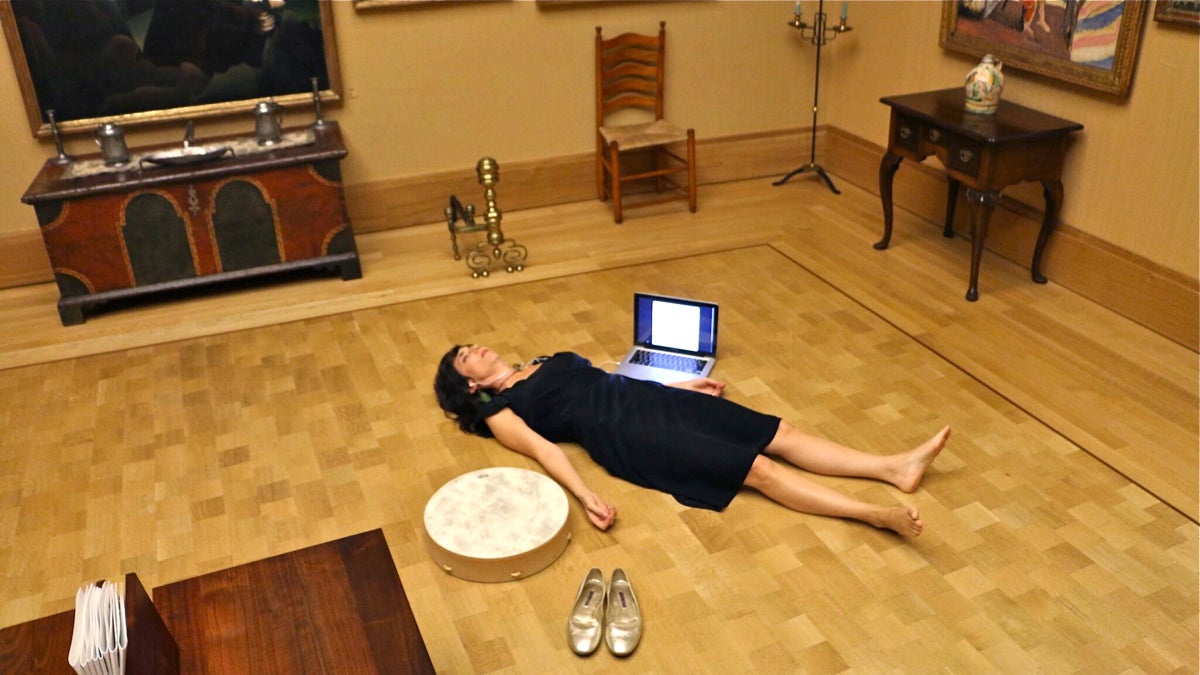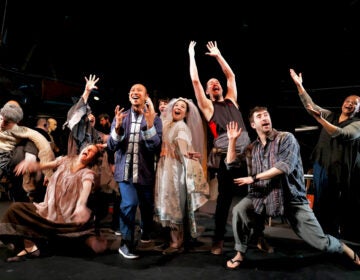Poet offers impressions of Barnes collection with sound installation
Listen
Andrea Hornick puts herself into a trancelike state in Room 23 of the Barnes collection to create ''Unbounded Histories.''(© 2016 The Barnes Foundation)
Dr. Albert Barnes had very particular reasons for collecting so many impressionist paintings and integrating them with tribal and religious art in his galleries. The Barnes Foundation already has an audio guide describing its founder’s art literacy agenda.
Now, poet Andrea Hornick has created an alternative interpretation, also available as a kind of audio guide. She was allowed into the galleries on her own, where she used drumming to go into a trancelike state and experience the art with her unconscious mind.
Hornick wrote poems based on those trances, describing imaginative landscapes and relationships between artworks that Barnes never intended. She guides visitors through the first room of the galleries, where Picasso’s “Composition: The Peasants” with figures and bulls hangs near a Georges Seurat painting of models disrobing in his studio.
“Turn right from Picasso’s bulls to face wall with Seurat’s models,” reads Hornick in a droning, monotone style, so robotically slow and dry as to leave out unnecessary articles. “Model refuses to leave Seurat’s room inside his head, though is open to small gathering of like-minded women in her dressing room.”
The 13 poems, corresponding to certain rooms in the galleries, are structured as an audio guide: they tell you where to start and what to look at. But the extreme academic style of delivery and the nearly psychedelic content belie its intention; this is performance art, designed to draw the listener into a near-hypnotic state and explore the historic galleries disconnected from art history.
“I think she’s poking fun at the audio guide format, and the authoritative voice you hear,” said Martha Lucy, a curator at the Barnes Foundation. “It takes a while to realize that part of what she’s doing is being funny.”
Lucy’s challenge as curator and deputy director of education is to bring contemporary art into galleries, which — by the foundation’s charter — can never be changed. Sound is one of the few means new art can be introduced into old galleries.
Hornick decided on her deliberate and didactic tone to re-create the “shamanistic journey” she entered when she was allowed into the galleries by herself. She wants to set up conditions for listeners to slip into their own quasi-trance state, and discover their personal relationship to the work aside from the official interpretation.
“When you walk into a gallery, and the museum has great authority, and these works are canonical, you want to connect with the work and have your own experience with them,” said Hornick. “In one aspect, this is a very elaborate scheme to make that happen.”
Hornick does not want her poetic recordings to be mistaken as an audio guide. Rather it is a performance art project — the Barnes Foundation describes it as an “audio intervention.” It is accessible as streaming audio on user’s smart phones, available until the end of February.
WHYY is your source for fact-based, in-depth journalism and information. As a nonprofit organization, we rely on financial support from readers like you. Please give today.





